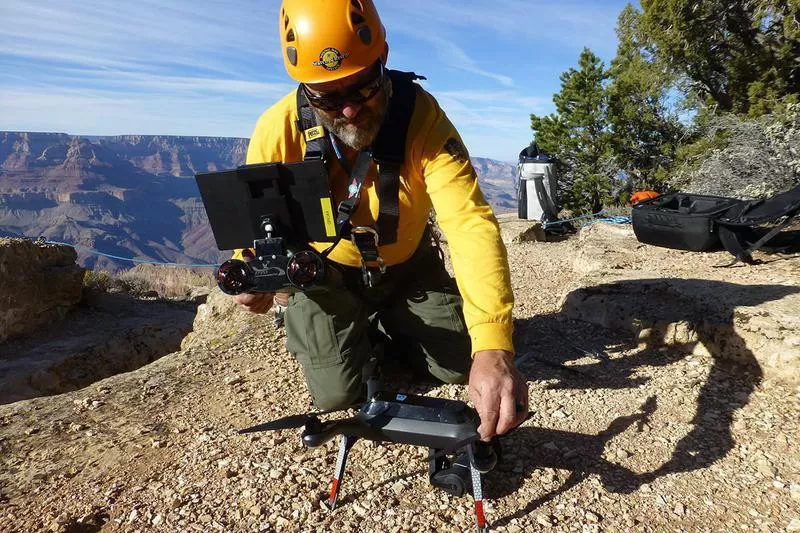
The Grand Canyon is the only national park with its own fleet of unmanned aircraft and drones for reaching people who have gotten lost, stranded, injured or killed. Brandon Torres / Grand Canyon National Park via AP Photo
National Park System sites collectively cover 85 million acres, and the terrain they contain is rugged and ever-changing. It should come as no surprise, then, that there are several recorded cases of people going missing at America’s parks. Exact numbers are hard to come by, but there are at least 60 unresolved missing-person cases in the National Park System.
The oldest cold case mentioned on the Investigative Services NPS site describes the disappearance of Dennis Lloyd Martin during a Father’s Day vacation at Great Smoky Mountains National Park in 1969. Martin, a 6-year-old boy, was playing with other children within close proximity to adult family members near the Appalachian Trail when he mysteriously disappeared. Fifty years later, the case remains unsolved and FOIA requests to the FBI have only produced redacted and incomplete information.
The list of missing persons also includes a park ranger named Paul Braxton Fugate. In 1980, he vanished while he was working at Arizona’s Chiricahua National Monument. The NPS is offering a $60,000 reward for information on the case. Even though the area has been searched numerous times, the authorities have no viable leads.
In 2010, a man went out for a solo hike at Joshua Tree National Park in California and was never seen or heard from again. He hasn’t been found despite the efforts of online groups working doggedly to crack the case.
Fortunately, when people go missing in national parks, they’re generally found.
In July 2019, to take a recent example, a New Jersey man suffering from dementia disappeared from the Cataloochee Divide Trail at Great Smoky Mountains National Park. The search efforts included canine units, helicopters, drones and 180 people from 30 agencies. For four days the missing man survived in the backcountry without any supplies. He was rescued by searchers when he responded to their calls.
Between 2004 and 2014, approximately 93 percent of people who went missing were located within 24 hours, as compared to the less than 3 percent who were never found.